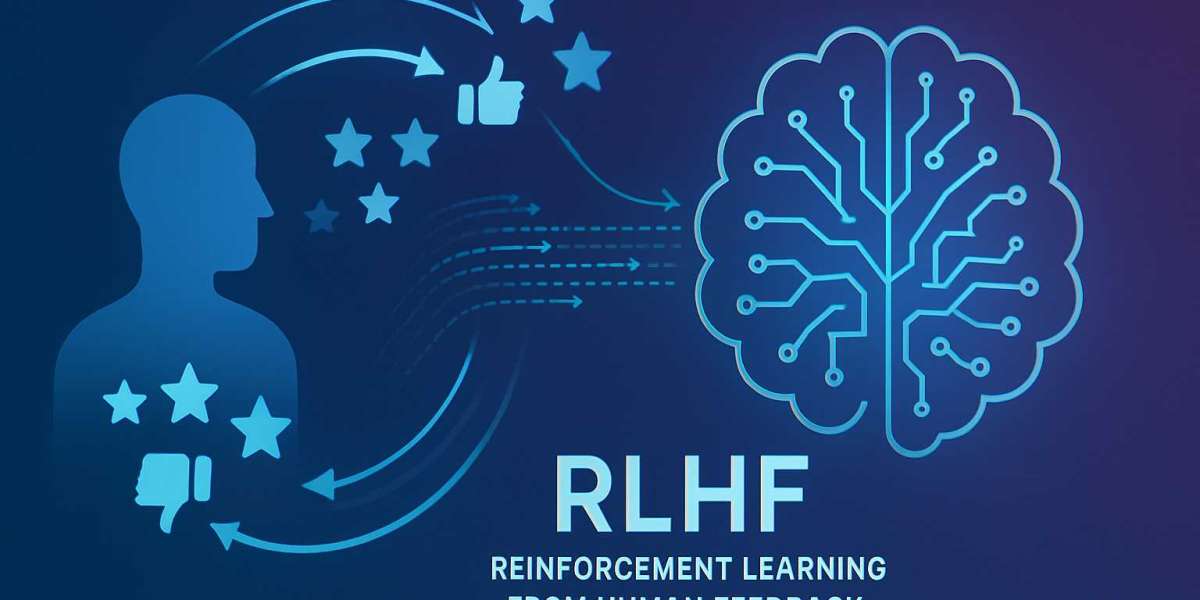Introduction
In an era where artificial intelligence (AI) systems need to align more closely with human values and expectations, Reinforcement Learning from Human Feedback (RLHF) has emerged as a transformative approach. It integrates human judgment into machine learning models, especially large language models (LLMs) like GPT and Claude, making AI outputs safer, more relevant, and user-friendly.
Understanding RLHF and Its Importance
RLHF is a machine learning technique that trains models based on human preferences rather than pre-defined, rule-based metrics. Unlike traditional reinforcement learning, which relies on automatic reward signals, RLHF uses human feedback as the reward function to optimize the model's behavior.
Why RLHF Matters
Addresses alignment problems in AI by incorporating human ethical judgments.
Improves contextual accuracy and user satisfaction in LLM outputs.
Helps detect and reduce bias and toxicity in language models.
Key RLHF Workflow
| Stage | Description |
|---|---|
| Pretraining | Model trained on a large text corpus. |
| Supervised Fine-Tuning | Human-labeled data guides model output refinement. |
| Reward Modeling | Human feedback is used to train a reward model. |
| Reinforcement Learning | Model is further trained using reinforcement learning with the reward model. |
Exploring Use Cases and Effectiveness
Real-Life Case Studies
1. OpenAI’s ChatGPT
Challenge: Early GPT models, while powerful, often generated irrelevant or harmful content.
Solution: OpenAI implemented RLHF with human labelers rating outputs from different versions of the model.
Impact: ChatGPT became more user-aligned, reducing toxic or nonsensical replies by over 70%.
2. Anthropic’s Claude
Challenge: Aligning an LLM with safety and helpfulness while preventing hallucinations.
Solution: Applied Constitutional AI (a variant of RLHF) using human-in-the-loop oversight based on a defined ethical framework.
Impact: Claude models showed 30–50% improvements in safe response generation compared to baseline models.
3. DeepMind’s Sparrow
Challenge: Build a dialogue agent that follows rules and avoids harmful behavior.
Solution: Trained with RLHF using reinforcement guided by a list of behavioral rules and human feedback.
Impact: Achieved better rule-following accuracy and user trustworthiness ratings than previous models.
Benefits of RLHF in AI Systems
Better Alignment: Models learn human values, improving compliance with ethical standards.
User-Centric Outcomes: Higher satisfaction scores from users engaging with RLHF-trained models.
Reduced Hallucinations: RLHF helps reduce the generation of false information by LLMs.
Customization: Enables domain-specific adaptations, such as healthcare, finance, or education.
Challenges to Consider
Scalability of Human Feedback: Requires significant time and resources for collecting quality human input.
Bias in Labeling: Human raters may introduce personal biases that affect model training.
Cost Implications: RLHF can be 3–5x more expensive than standard training pipelines.
Implementing RLHF for Your AI Solutions
| Use Case | Suitability for RLHF |
|---|---|
| Building AI Assistants (e.g., chatbots) | Highly suitable |
| Content Moderation Tools | Very effective with human oversight |
| Medical/Legal Document Analysis | Requires domain-specific feedback |
| Generic Data Classification | Less beneficial, traditional ML suffices |
How to Implement RLHF
Collect Human Preferences
Use pairwise comparisons or ranking mechanisms.
Involve domain experts if operating in sensitive fields.
Train a Reward Model
Build a supervised model that predicts human preferences.
Validate its reliability on unseen data.
Apply Reinforcement Learning
Use algorithms like Proximal Policy Optimization (PPO) to update the base model.
Reward functions are derived from the human-trained reward model.
Tools Frameworks
OpenAI’s RLHF APIs (currently not public, but frameworks are discussed in their papers)
DeepSpeed-Chat: Open-source implementation for RLHF.
TRL by Hugging Face: Toolkit for Reinforcement Learning training with Transformer models.
Cost and ROI Considerations
| Parameter | Estimate (Baseline) |
|---|---|
| Human Labeling Cost | $0.10 – $0.50 per instance |
| Training Infrastructure Cost | $1,000 – $10,000 per model pass |
| ROI for Enterprises | Increased user retention by 20–35% |
Conclusion: The Future of AI is Human-Guided
RLHF represents a paradigm shift in how AI systems are trained and deployed. By integrating human feedback into the reinforcement learning loop, organizations can build AI systems that are more ethical, accurate, and aligned with real-world user expectations. Whether you're developing a conversational assistant or a domain-specific model, RLHF offers a strategic advantage that sets your AI apart.
FAQs on RLHF
Q1: Is RLHF only useful for language models?
No. While widely used in LLMs, RLHF can be applied to robotics, vision models, and recommendation systems where human judgment is critical.
Q2: How does RLHF differ from supervised learning?
Supervised learning uses static labels, while RLHF uses dynamic human feedback to refine a reward model for continual optimization.
Q3: What expertise is needed to implement RLHF?
A mix of ML engineers, domain experts (for human feedback), and access to computational infrastructure is essential.











